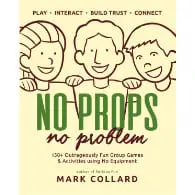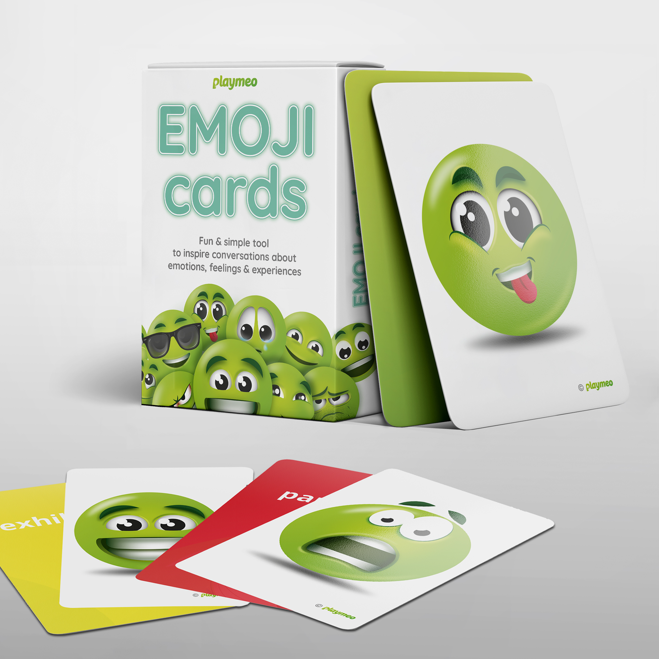One of the most powerful things an educator can do to help their groups succeed is to create a safe, welcoming environment in which their participants can feel comfortable and, indeed, invited to step outside their comfort zones.
As I share in my book Serious Fun, environment dictates performance.
Bottom line – one of your primary responsibilities as an educator or group facilitator is creating an environment where participants can make appropriate decisions (in the context of your program goals.)
Willing to Step Outside One’s Comfort Zone
If you’re in the business of education (as distinct from recreation,) everything you do is about inviting your participants to willingly step outside their Comfort Zones because (this is a fact, not something I made up) learning growth & development ONLY occur in one’s Stretch Zone.
If the concept of Comfort or Stretch Zones is new to you, this refers to the educational theory of the Zone of Proximal Development, a model first developed in the early 20th Century by psychologist Lev Vygotsky. You can learn more about the ZPD in Episode 33 of my Facilitator Tips video series.
To this end, the Proximal (optimal) Zone of Development is often referred to as the Stretch Zone because it’s just easier to understand 🙂
As comfort-seeking machines, humans are programmed to want to stick inside their Comfort Zones because it’s safe – but safe does not equate to growth. Indeed, there is never any learning that occurs within one’s Comfort Zone.
So, if you want to encourage people to step outside of their Comfort Zones, you have to give them a really good reason to do so.
Which brings us to the million-dollar question:
How does an educator invite these same humans to willingly step outside their Comfort Zones and into their Stretch Zones?
How To Create a Safe Space to Learn
This topic is the focus of much of the content I have shared over the years and is certainly front and centre in my book Serious Fun.
In short, I have employed a few essential tools and skills over these years to create a safe place for people to interact, share, build trust and learn.
Not that these following tools and strategies have been sequenced in any particular order, but here are my top four strategies for creating a safe environment:
Fun
OK, maybe this one is at the top of the list. It is not necessarily the most important, but I believe it to be the quickest and most powerful of all the tools I employ to invite my groups to step outside their Comfort Zone. When the pathway or journey looks fun (or FUNN,) it is very difficult not to get swept up in the group’s enthusiasm and stretch oneself. If it ain’t fun, it ain’t worth doing, in my opinion. In this regard, I invite you to expand your understanding of what I mean by fun, too. Take a peek at Episodes 15 and 17 of my Facilitator Tips video series to understand what I mean.
Challenge by Choice
When people genuinely feel that they have agency over their participation AND feel that they will be supported by the group no matter what they choose to do (or not do,) their choices often propel them forward to accomplish things that exceed their self-perceived limits. This can look and sound like someone saying, “I’m going to give this a go,” because they feel their group will not make fun of them if they fail or get it wrong. Or, even more powerfully, it looks like a participant telling their group they do not wish to do something and asking for their support. Check out Episode 6 of my Facilitator Tips video series for more.
Language
I speak to this in many ways, but at its most basic, your language must always honour choice. When you say, “You must do this…” it narrows the possibilities of participation. A more powerful phrase may be to say, “I invite you to…” because it is open-ended and gives the participant the power to choose. This approach does not excuse poor or inappropriate behaviour because responsibilities and consequences scaffold all of our choices. Remember, it’s about creating an environment where your group can make appropriate choices. To illustrate, choosing not to hand in one’s homework (as just one example) is clearly a choice, but it may also reflect a dereliction of responsibility, which comes with consequences. For more, check out Episode 8 of my Facilitator Tips video series.
Framing
This strategy can be viewed at both micro and macro levels. At a macro level, the overlay of my philosophical framework (eg Challenge by Choice, FUNN, Learning through Reflection, etc.) creates a powerful framework that, when combined, creates a safe, open, and vibrant space for interaction and learning. But mico-level framing is equally important because, for example, this relates to the sequence of the activities I present and the language I employ to describe and instruct my group on what is expected of them. In short, everything is framing – before, during and after your program is complete. Again, you can learn more about the power of framing in Episode 14 of the Facilitator Tips video series.
What If These Tools Don’t Work?
In the real world, of course, there is always the risk that no matter how much preparation you provide your group, some people are just not willing (or ready) to step outside their comfort zones. And over the years, I have grown accustomed to saying, ‘That’s okay…”
It’s always easier to point the finger and exclaim the issue is with them, but there’s no power in that response.
Rather, I work hard to flip the situation and explore this as a learning opportunity. I might ask questions such as:
- What could I have done differently?
- What behaviours or attributes did I dismiss or discount?
Or, I might just say They needed more time than was available to me.
But I do know this.
My groups are far more prepared and equipped to step outside their Comfort Zones and learn with these strategies in place than without.
What Resonated for You?
I’d really like to know what resonated for you in this article.
Was there something you really needed to read/hear today?
If you have a moment, please tell me what it was that you learned, heard or took away that made a difference.
Just click the Comments section.













Original post September 2023, last updated September 2023.